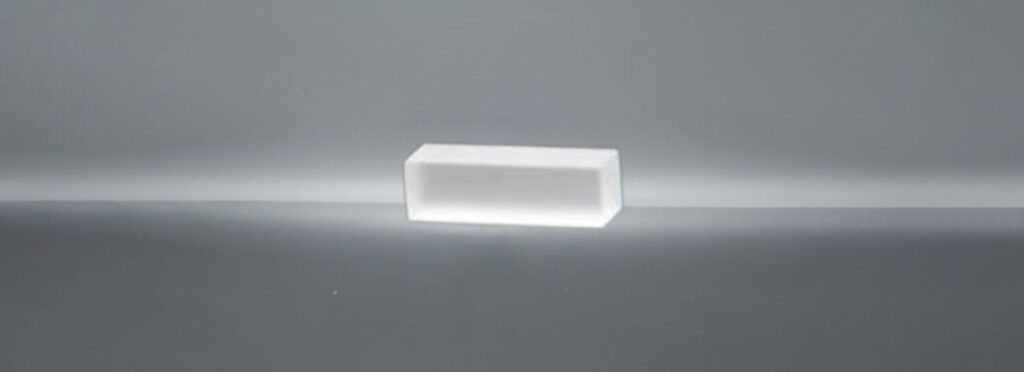Introduction to KTP Crystals
Potassium titanyl phosphate (KTP) crystals are renowned for their unique properties, making them an invaluable component in various technological applications. With their remarkable non-linear optical characteristics, they are pivotal to the operations of green lasers, including laser pointers and projectors.
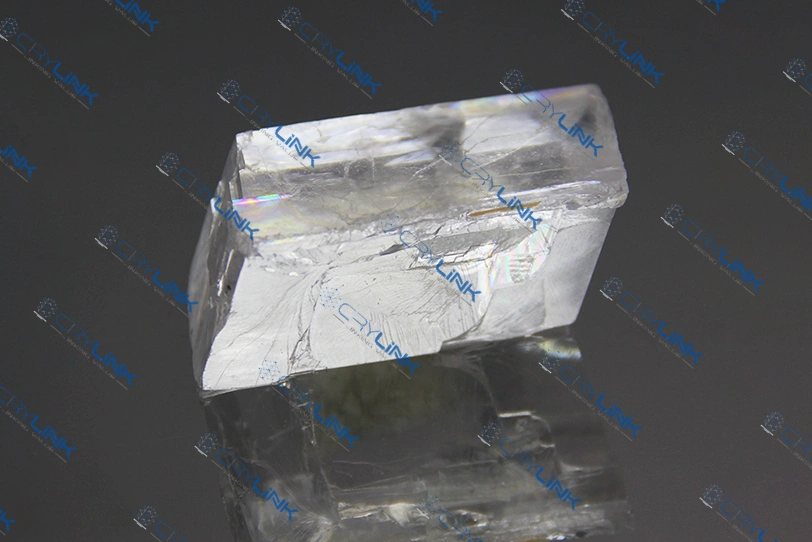
Understanding Green Laser Technology
The Science Behind Green Laser Technology
The world of green laser technology is steeped in a fascinating blend of physics and engineering. Fundamentally, a green laser operates by emitting light at a specific wavelength of 532nm, which falls in the green portion of the visible light spectrum. Achieving this precise wavelength involves a multi-step process known as frequency doubling.
The first step in the process involves an infrared laser diode that produces an initial beam of light. This beam has a wavelength of about 808nm, which is in the infrared spectrum and not visible to the naked eye.
Role of Secondary Medium in Green Lasers
The 808nm light is then directed onto a secondary medium, typically a crystal such as Nd:YAG or Nd:YVO4. Here, the infrared light pumps the secondary medium to produce light at 1064nm, still within the invisible infrared range. These crystals are selected as secondary mediums due to their ability to absorb the 808nm light and re-emit it at a different wavelength through a process known as stimulated emission.
Frequency Doubling Through KTP Crystals
The final step, which enables the production of green light, involves the critical role of Potassium titanyl phosphate, or KTP crystals. These crystals, with their unique nonlinear optical properties, act as a frequency doublers. Through a process called Second Harmonic Generation (SHG), the KTP crystal converts the 1064nm light into light at a wavelength of 532nm. This wavelength corresponds to green light, giving us the green laser beam we see in applications such as laser pointers and projectors. It’s this intricate interplay of technology and physics that makes green laser technology a field of ongoing interest and research.
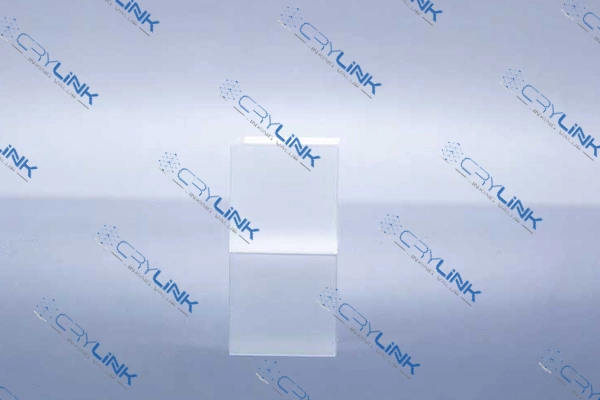
The Role of KTP Crystals in Green Laser Applications
At the core of green laser technology lies the function of Potassium titanyl phosphate, or KTP crystals. As nonlinear optical components, these crystals enable the frequency conversion essential for generating a green laser. The technical process begins with an infrared laser diode that produces an 808nm wavelength. This infrared light then pumps a secondary medium, usually a crystal like Nd:YAG or Nd:YVO4, which then produces light at 1064 nm. However, this light is still in the invisible infrared range. Herein lies the role of KTP crystals.
These crystals, through the process of Second Harmonic Generation (SHG), convert the 1064 nm light to 532nm, which is the green light that we perceive in laser pointers and projectors. KTP crystals have proved their worth as the most effective medium for this conversion due to their high efficiency and minimal power requirements.
KTP Crystals in Laser Pointers
In green laser pointers, KTP crystals provide an essential service. The compact size and durability of these crystals make them ideal for this application. Additionally, the specific property of KTP crystals allows them to efficiently convert the infrared light to green, which is brighter and more visible to the human eye than red lasers.
By manipulating the crystal’s temperature and orientation, manufacturers can maximize the output power of the green laser pointer while minimizing energy consumption. This balance of power and efficiency is vital in creating a laser pointer that is both bright and long-lasting.
KTP Crystals in Projectors
Projectors require a strong, steady beam of light to function effectively, and here too, KTP crystals are crucial. In green laser projectors, the laser module contains an infrared laser diode that emits infrared light, a crystal that converts the infrared light to 1064nm light, and finally, a KTP crystal that transforms the 1064nm light into green light.
The role of the KTP crystal in these projectors is paramount because of the high power levels required. A key advantage of using KTP crystals in projectors is their ability to handle high power levels without degradation, thereby maintaining the projector’s optimal performance over a more extended period. Furthermore, they contribute to the projector’s energy efficiency, which is an essential factor in large-scale applications.
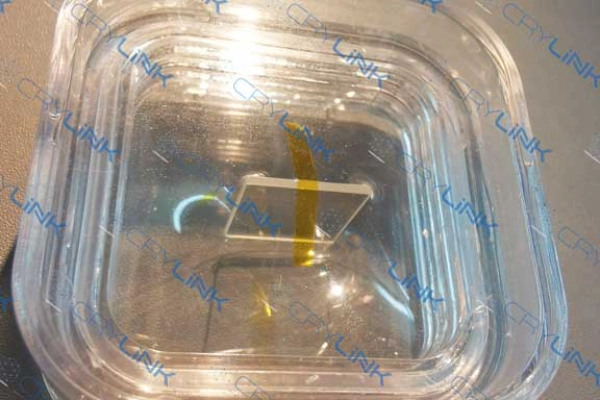
Why KTP Crystals are the Preferred Choice
When it comes to green laser applications, KTP crystals dominate the industry due to their unique combination of characteristics. They exhibit superior performance and versatility compared to other materials. The key traits making them the preferred choice in green laser technology are their high conversion efficiency, broad transparency range, exceptional damage threshold, and temperature stability.
High Conversion Efficiency
KTP crystals’ ability to efficiently convert infrared light into visible light sets them apart in laser technology. Their high conversion efficiency means that a higher proportion of the incoming light is converted into the desired output, which, in this case, is green light. This efficiency results in a brighter, more potent beam from devices like laser pointers and projectors. Furthermore, high conversion efficiency implies reduced power waste, contributing to overall energy conservation in these devices.
Broad Transparency Range
The broad transparency range of KTP crystals, spanning from 350nm to 4000nm, is one of their most compelling features, particularly in the context of green laser technology. This broad range means that KTP crystals can effectively transmit light over a wide spectrum, enabling them to operate with diverse laser frequencies. This property greatly contributes to the versatility and efficiency of laser devices, making KTP crystals an invaluable component in these applications.
In the specific case of green laser technology, the broad transparency range allows for the conversion of 1064nm infrared light into 532nm green light, the color that is perceptible to the human eye in green laser applications. The KTP crystals act as a bridge, making the invisible infrared light visible as a green laser.
But the utility of the broad transparency range of KTP crystals extends far beyond just green lasers. Their capability to operate over a wide spectrum paves the way for their use in other types of lasers as well. For instance, KTP crystals could be used in frequency-doubled Nd:YAG lasers to produce blue light, or in OPOs (optical parametric oscillators) for tunable output across a wide range of wavelengths.
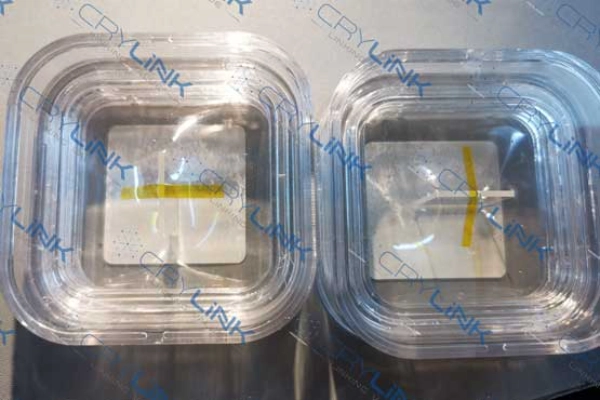
Exceptional Damage Threshold
The world of lasers often demands materials capable of enduring high levels of light intensities without undergoing damage. KTP crystals possess an outstanding damage threshold, allowing them to resist potential damage from intense laser operations. This property is particularly advantageous in high-powered applications, such as projectors, where the lasers’ intensity is significantly higher than in low-powered devices like pointers.
Temperature Stability
Another remarkable feature of KTP crystals is their temperature stability. The performance of many materials can fluctuate based on temperature changes, but KTP crystals maintain consistent efficiency across a wide temperature range. This stability ensures a reliable, steady output in varying environmental conditions, making these crystals a reliable choice for both indoor and outdoor laser applications.
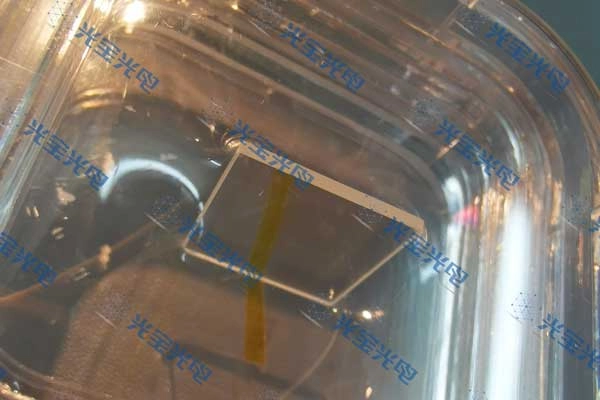
Conclusion
In the intricate world of laser technology, the extraordinary properties of KTP crystals have carved out a special place for them in green laser applications. Their fundamental role in frequency doubling makes them a linchpin in the production of green lasers for laser pointers and projectors.
The high conversion efficiency of KTP crystals not only ensures optimal transformation of infrared light into visible green light but also fosters energy conservation. Their broad transparency range paves the way for versatility, opening up possibilities for their use in other laser applications. The exceptional damage threshold they possess enables them to withstand high power levels, contributing to the durability of the devices they inhabit.
Moreover, the temperature stability of KTP crystals guarantees consistent laser performance across various operating conditions. This combination of efficiency, versatility, durability, and reliability makes KTP crystals the preferred choice for green laser applications.
As we continue to advance in the field of laser technology, the importance of understanding and leveraging the unique properties of KTP crystals becomes ever more apparent. Their present dominance in green laser applications could well be a stepping stone to future innovations, reinforcing their central role in this exciting field.
Frequently Asked Questions
- Q1: What is a KTP crystal?
A1: KTP stands for potassium titanyl phosphate. It is a crystal used in many technological applications due to its unique non-linear optical characteristics. - Q2: How does a green laser work?
A2: A green laser operates by emitting light at a wavelength of 532nm, which is in the green spectrum of visible light. This is achieved through frequency doubling, a process enabled by KTP crystals. - Q3: Why are KTP crystals used in green laser pointers and projectors?
A3: KTP crystals are used because they can efficiently convert the frequency of incoming infrared light into green light, a process called second harmonic generation (SHG). - Q4: What makes KTP crystals a preferred choice in green laser applications?
A4: KTP crystals offer high conversion efficiency, broad transparency range, exceptional damage threshold, and temperature stability, making them the ideal choice for green laser applications. - Q5: Can KTP crystals be used in other laser applications?
A5: Yes, due to their broad transparency range, KTP crystals are versatile and can be used in a variety of laser applications beyond just green lasers.

Frank
Frank graduated from the University of Shanghai for Science and Technology, majoring in optics. As a technical engineer at Crylink Company, he deeply understands crystal materials and laser components.
Related Video(s) with this Article
Related Product(s) with this Article
Related Application(s) with this Article

